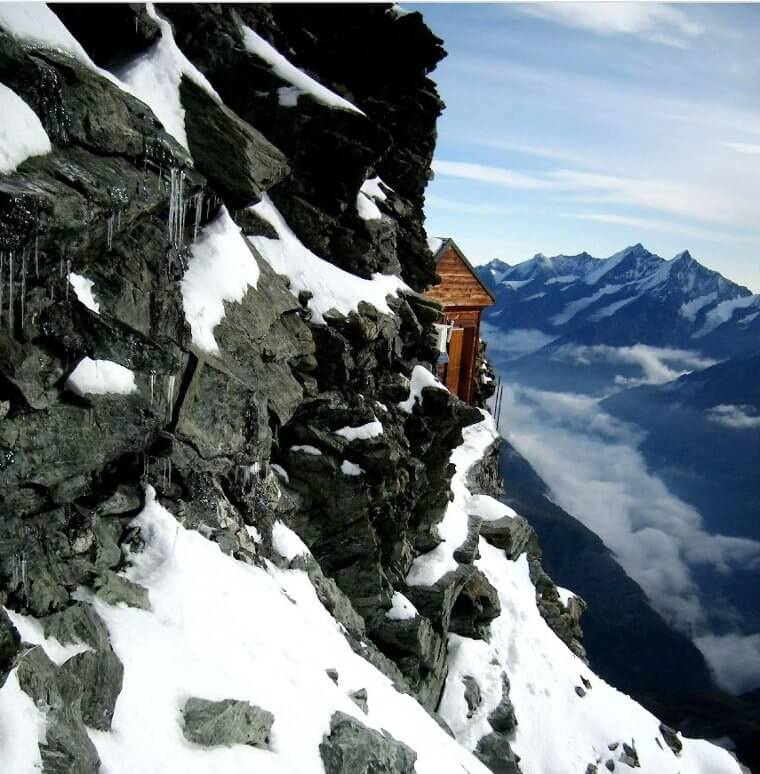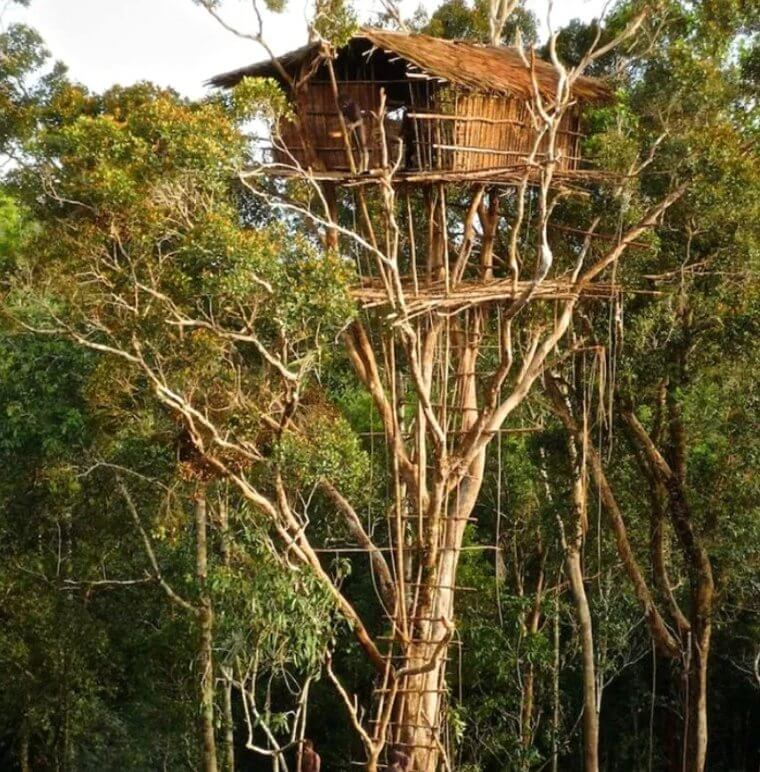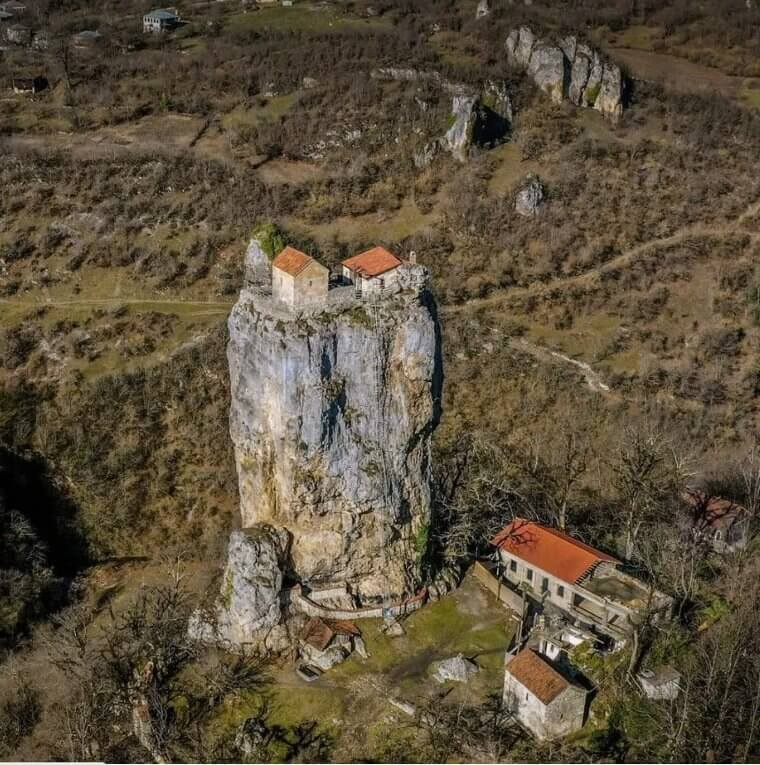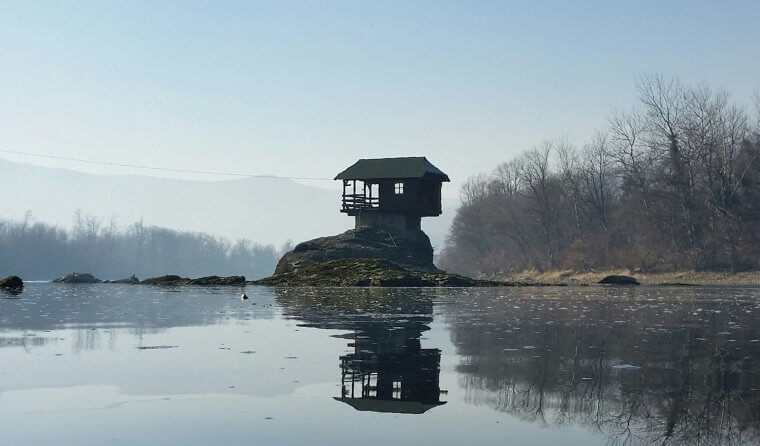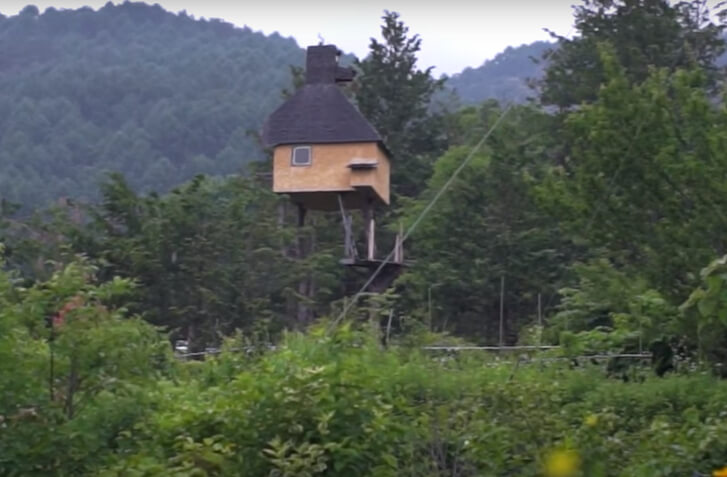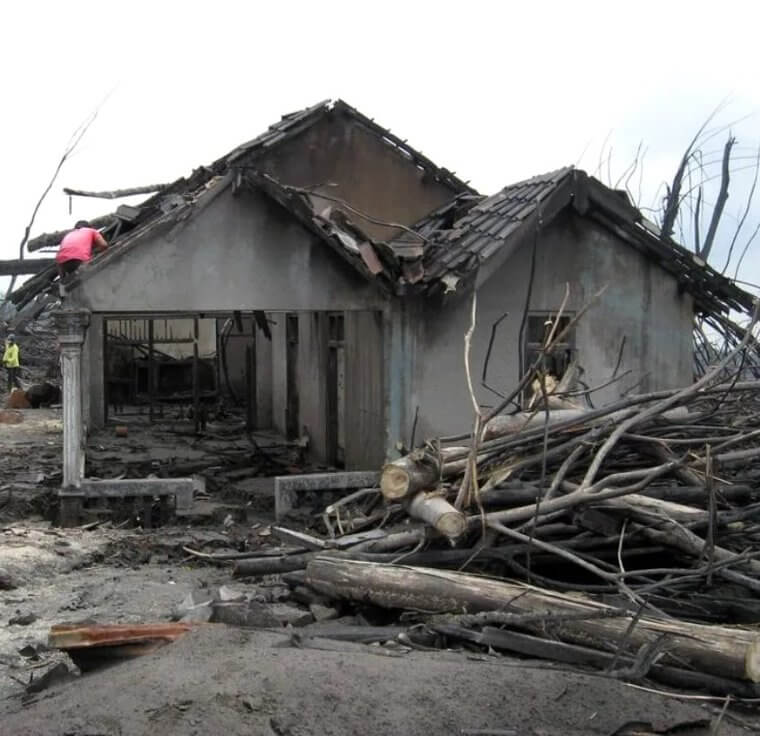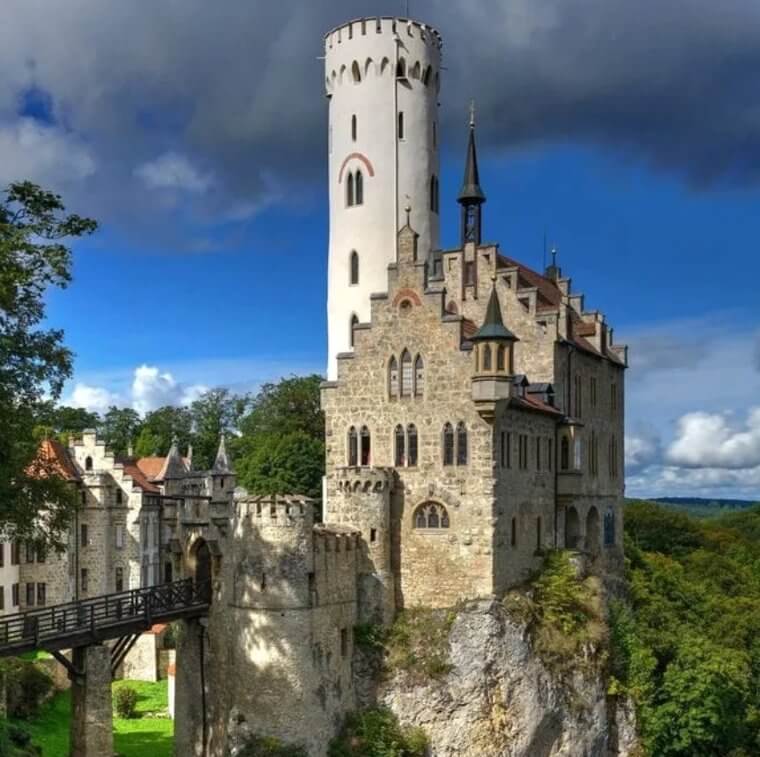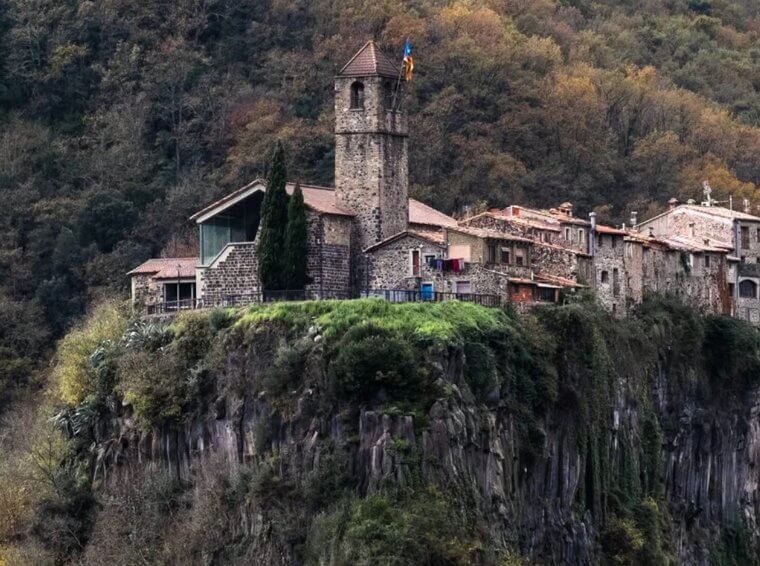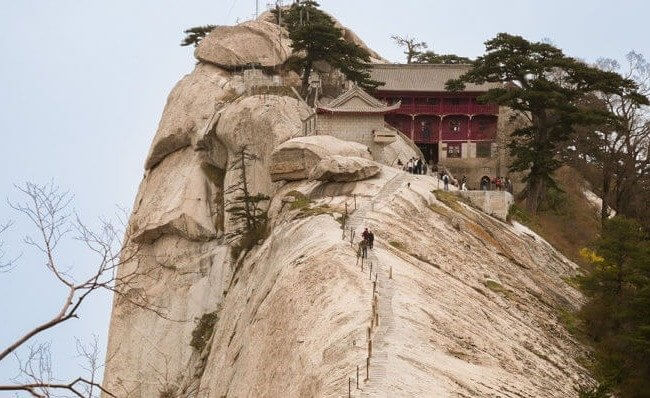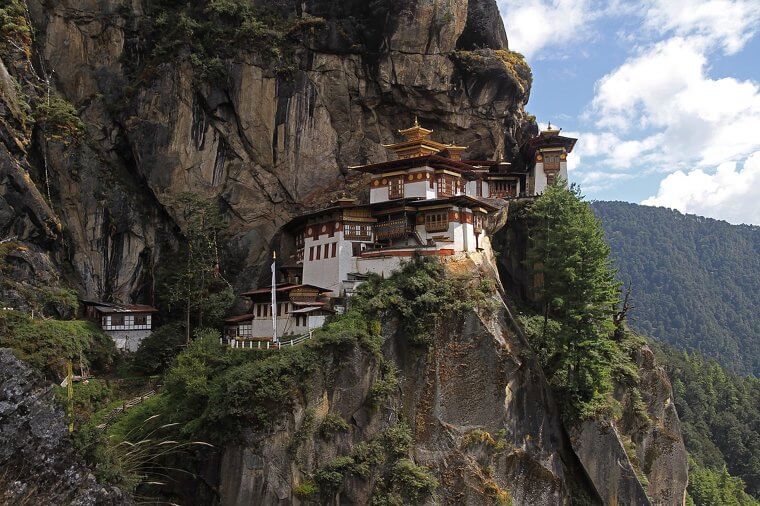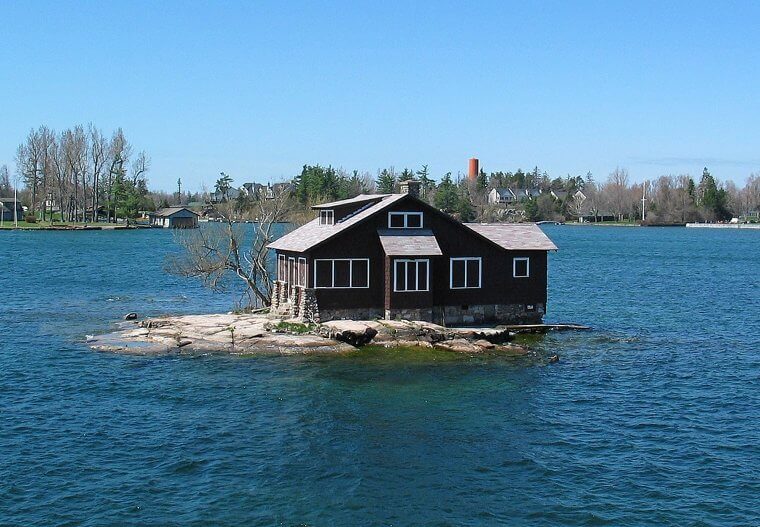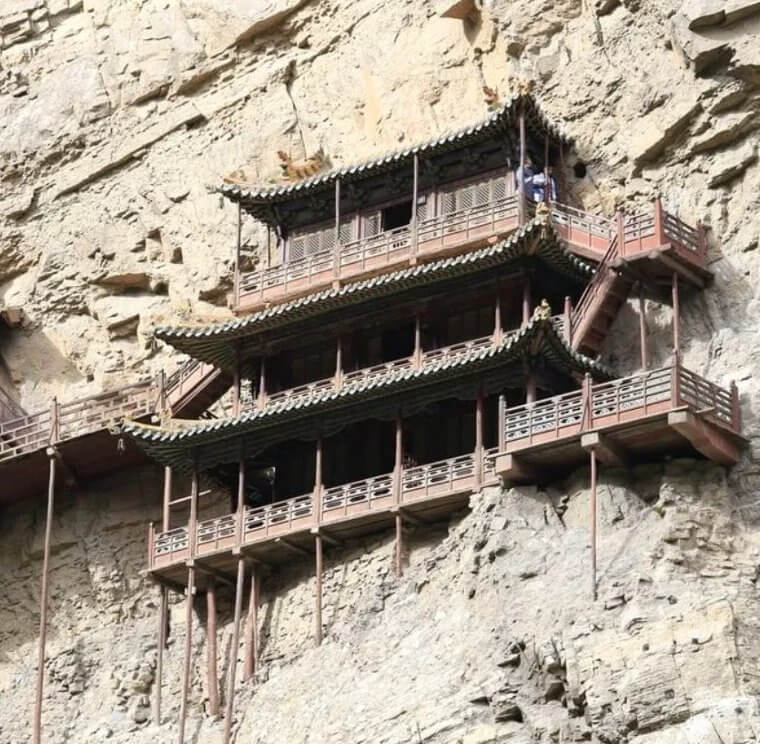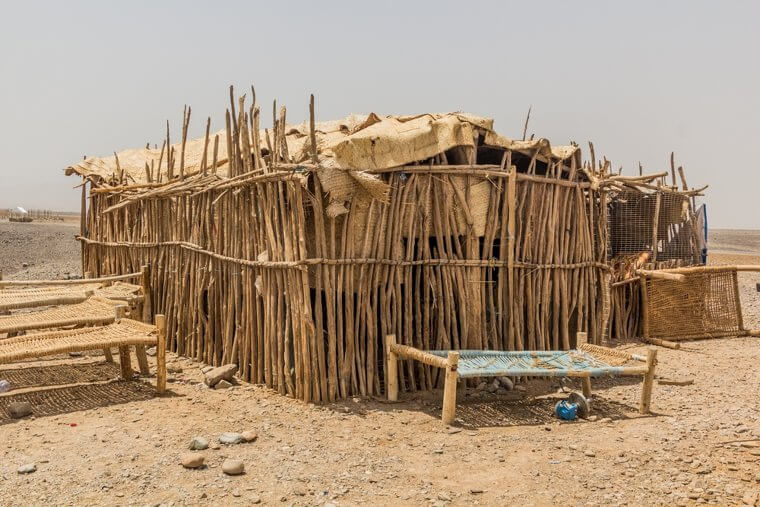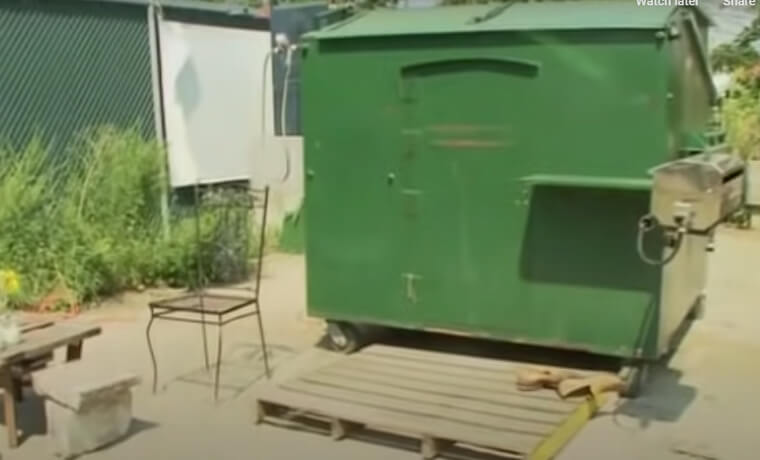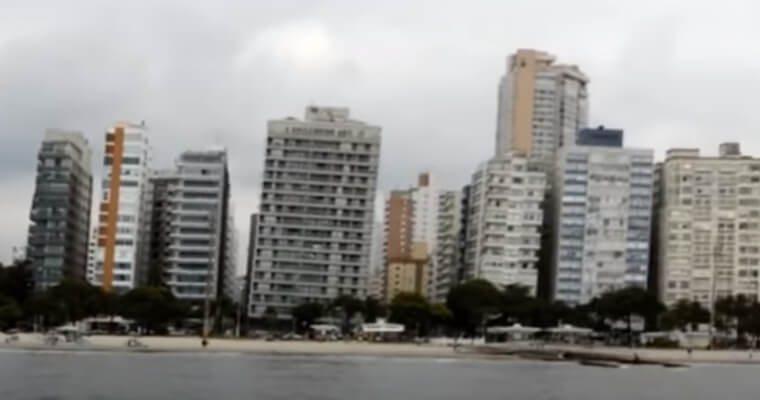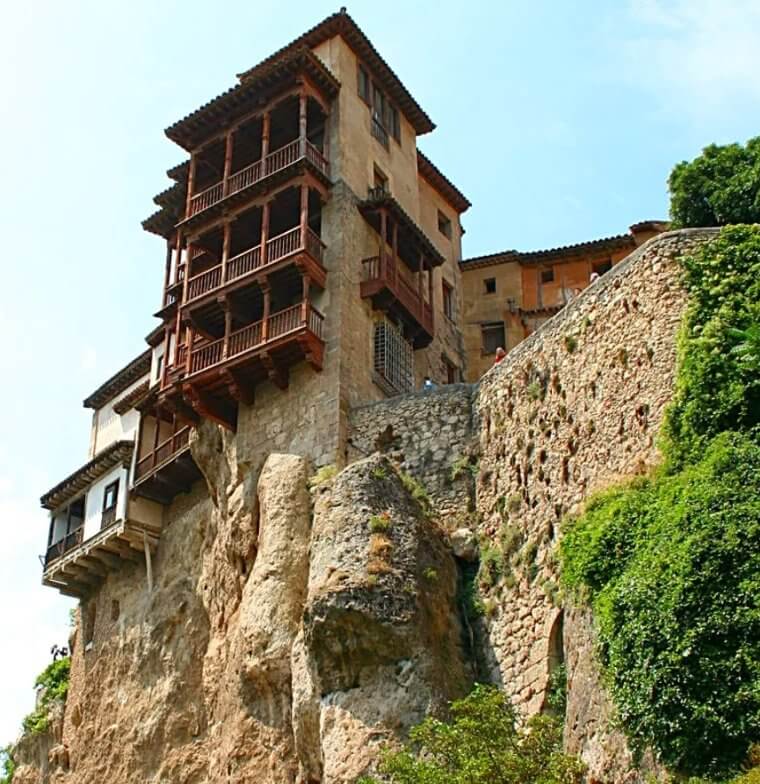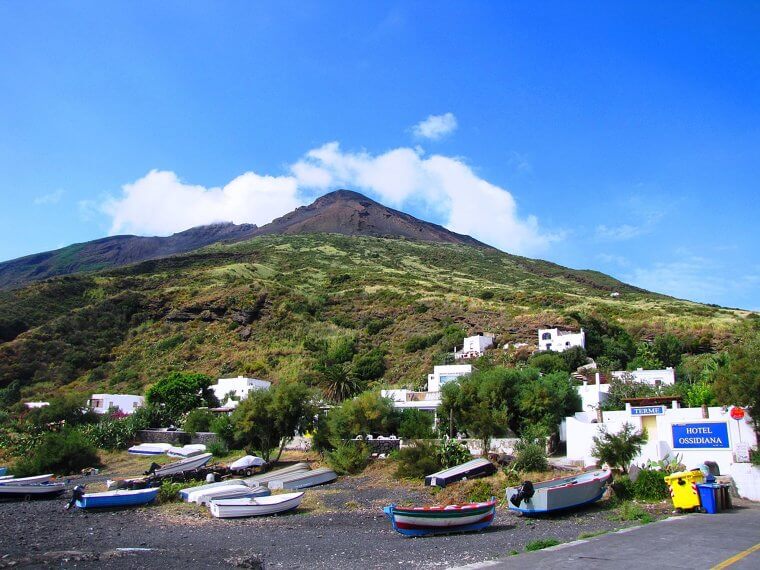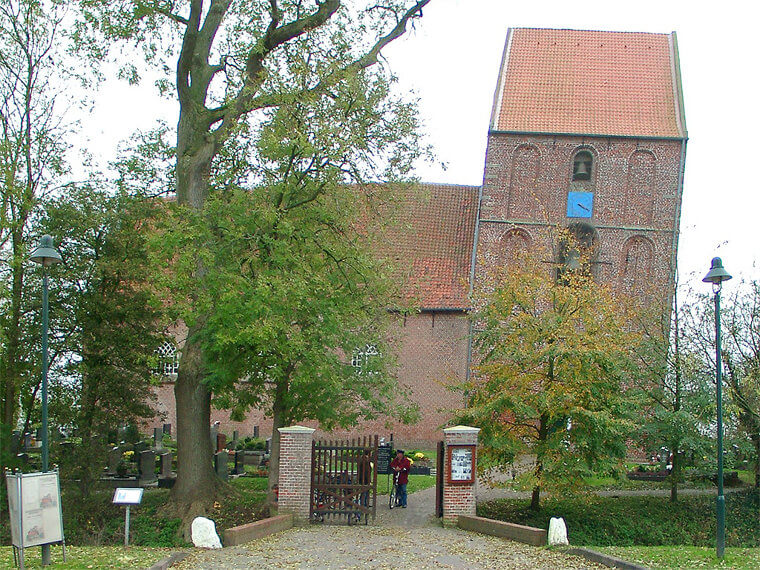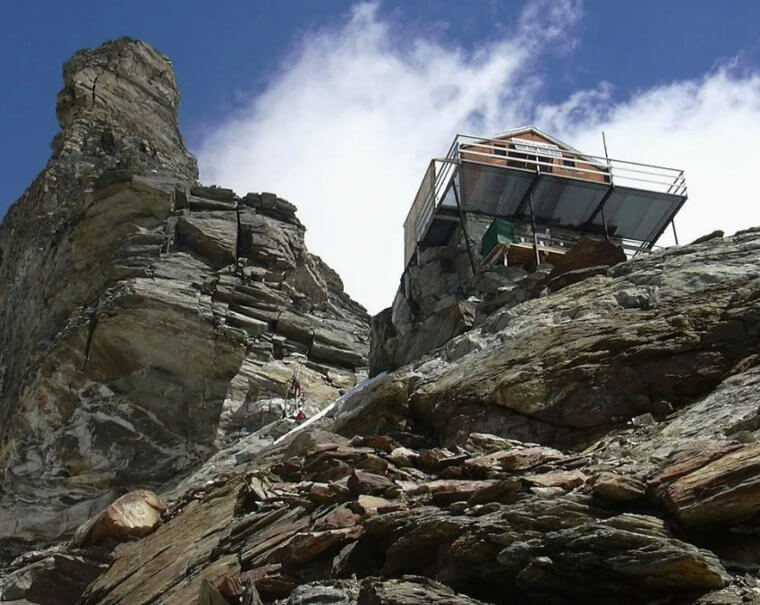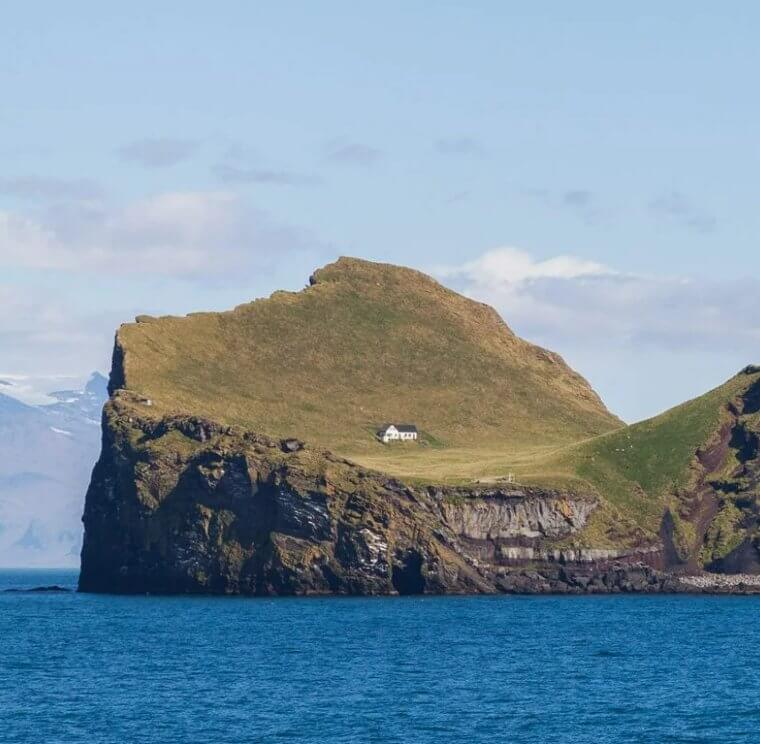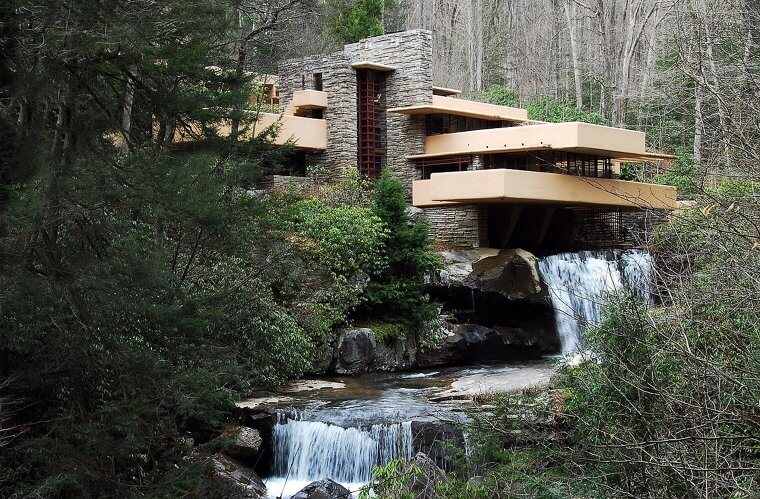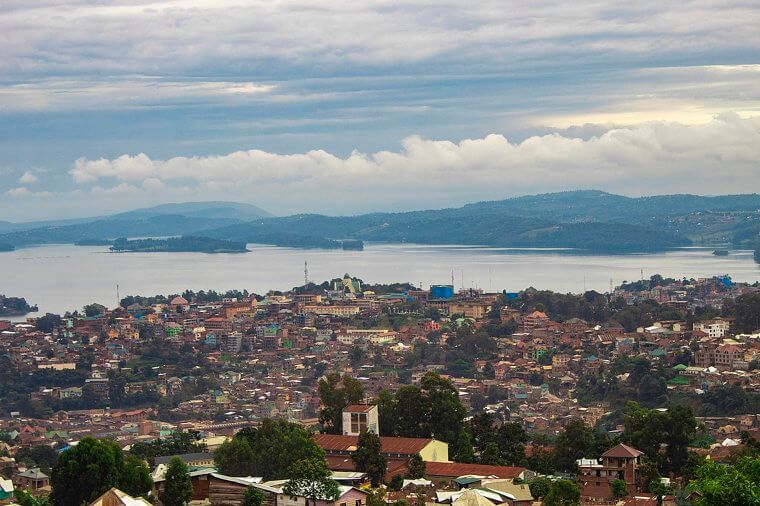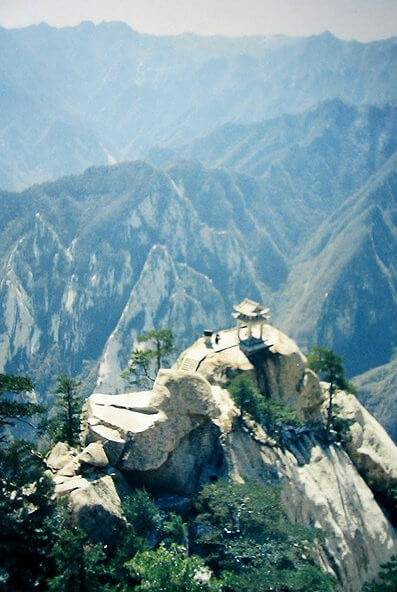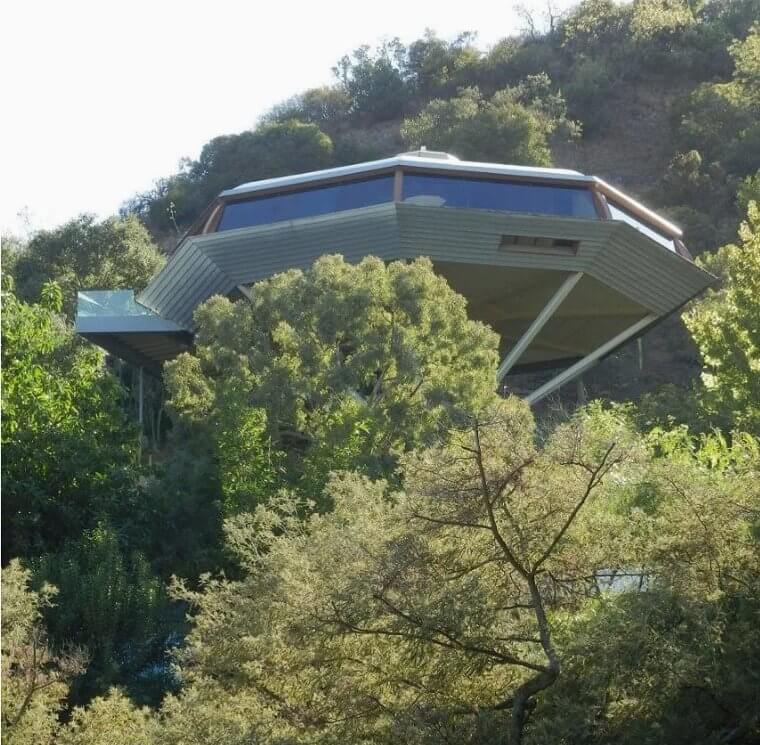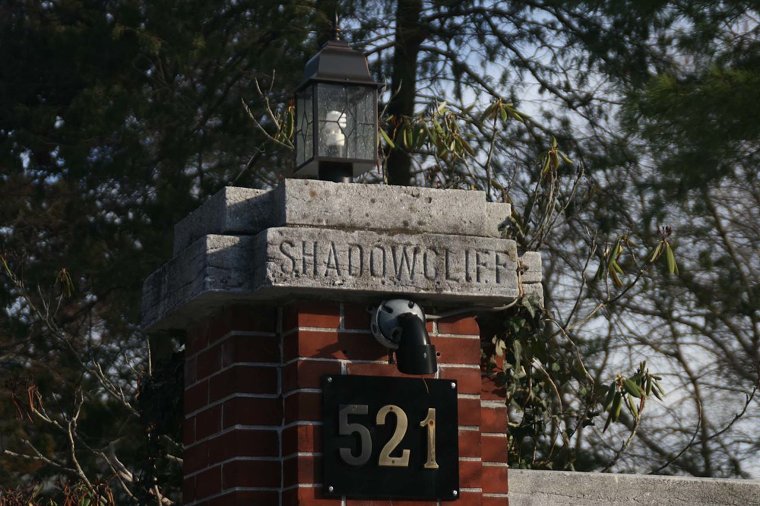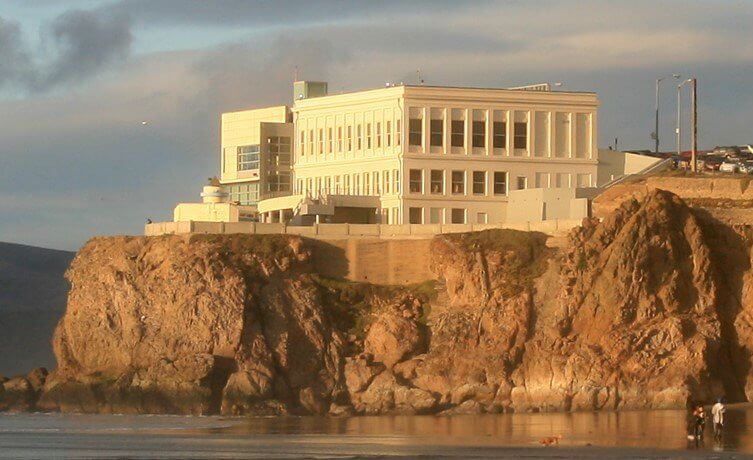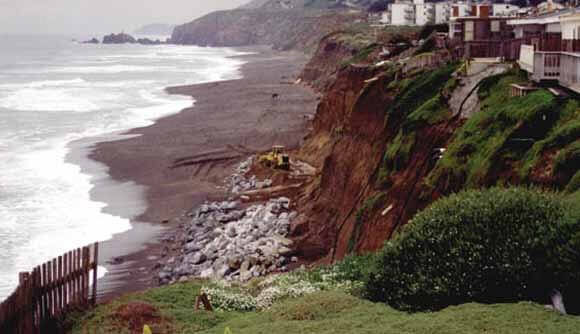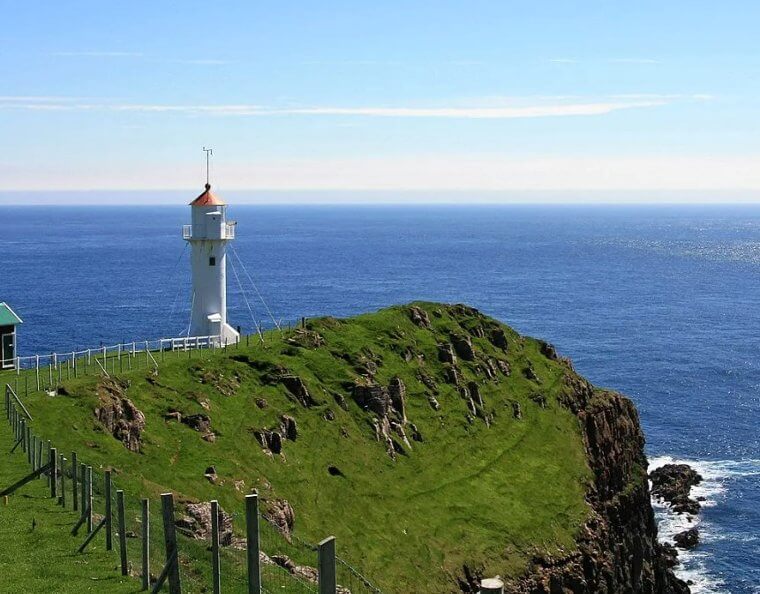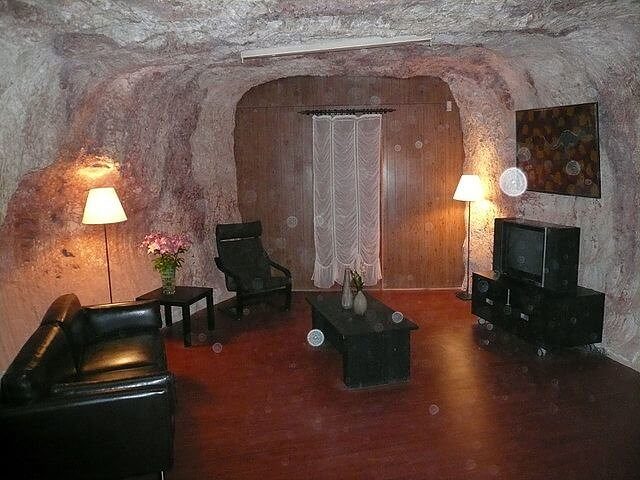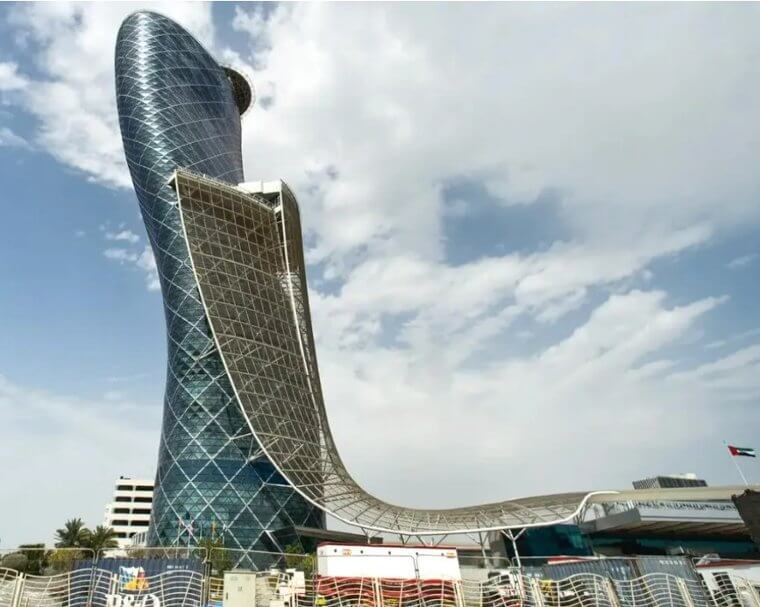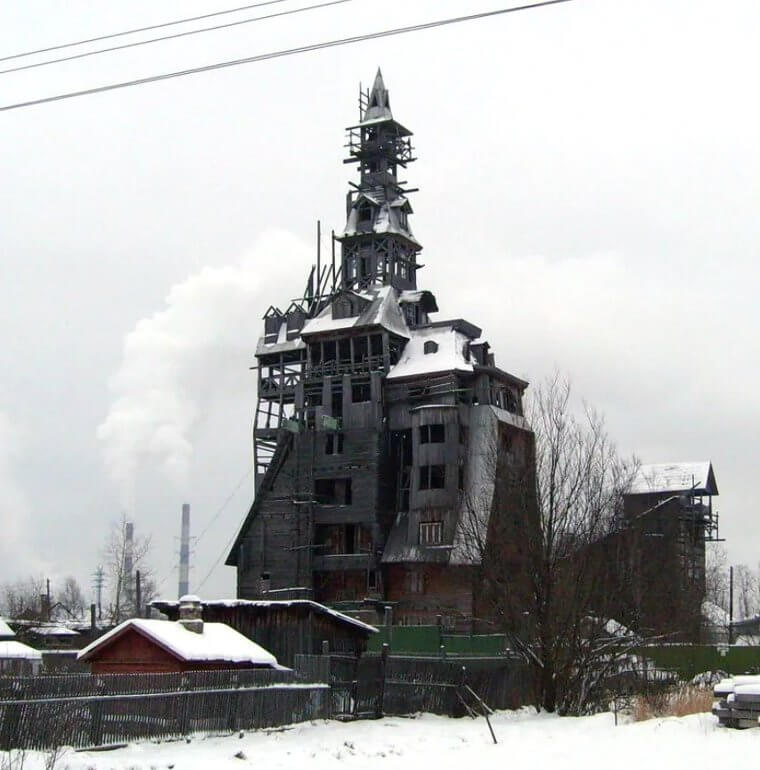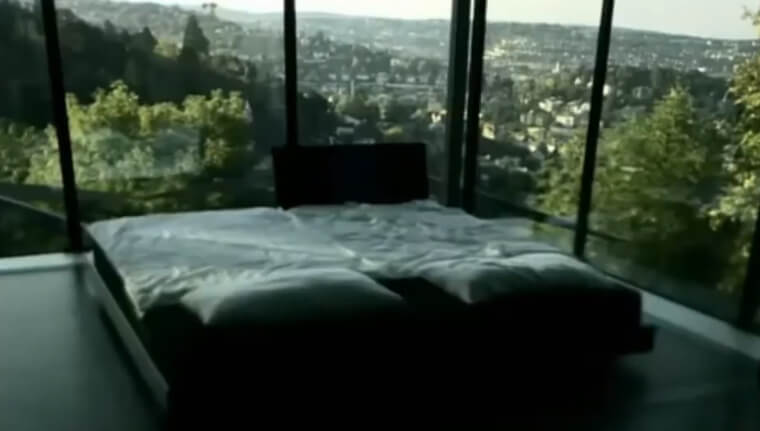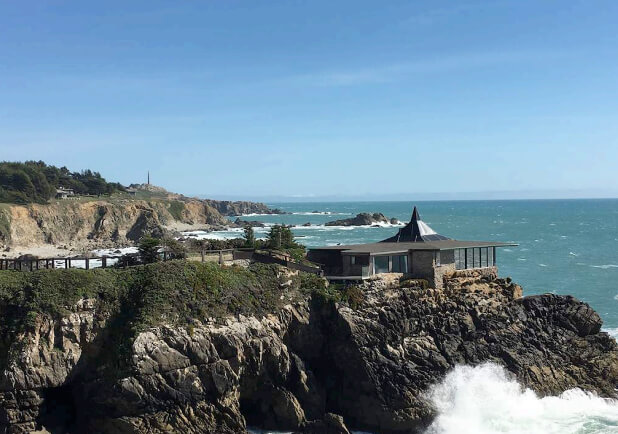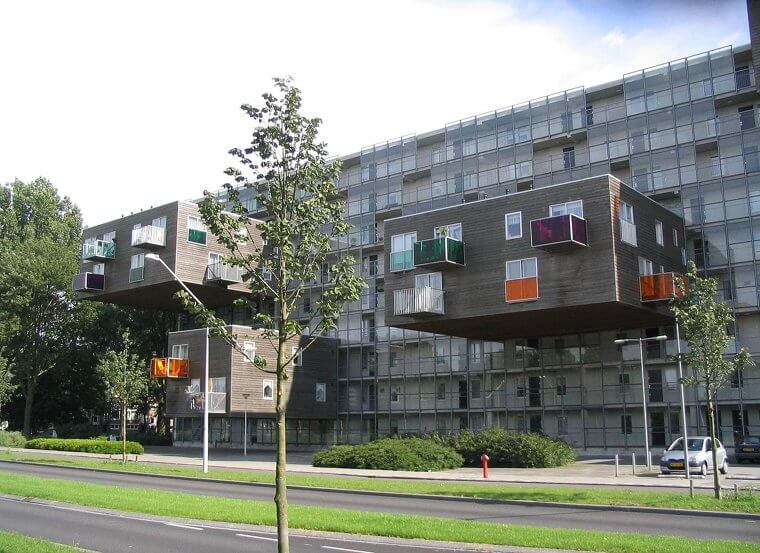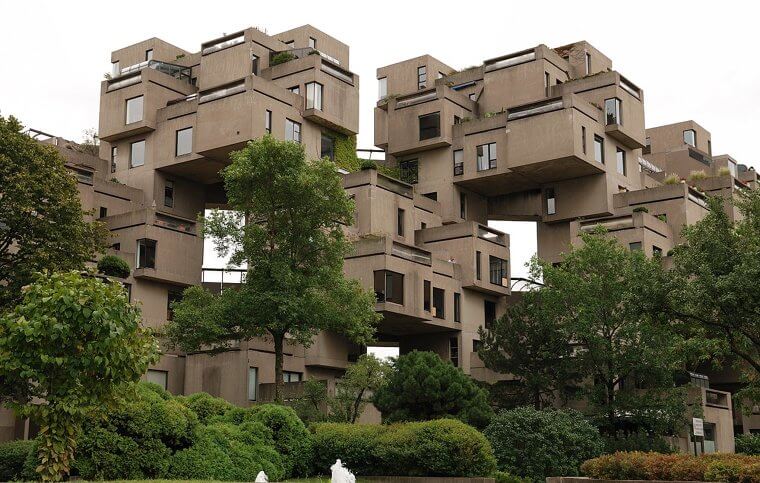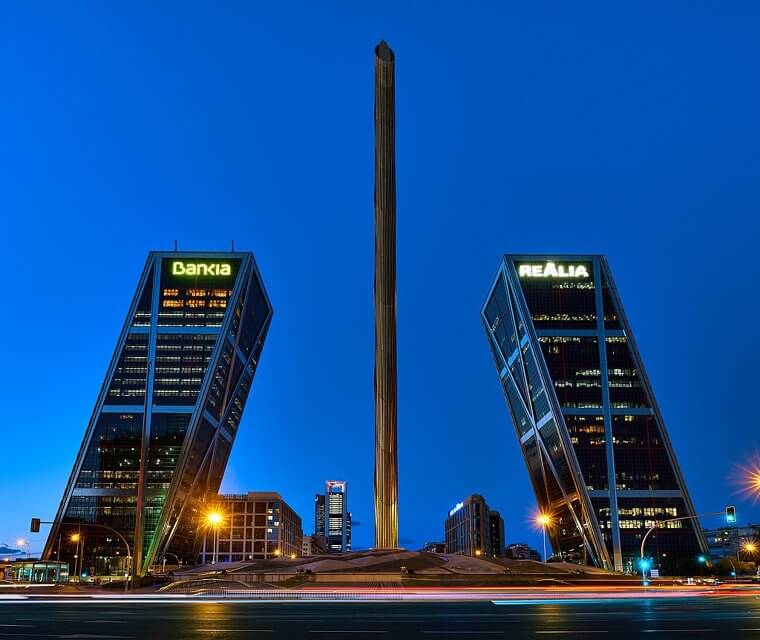Solvay Hut in Switzerland
Residing a perilous 13,000 feet above sea level, this non-too-stable-looking hut sits on Matterhorn, a mountain along the Swiss-Italian border. Apparently, it can house ten people, which to be fair we were surprised by. This hut looks like it's on the small side, but maybe that's just the perspective of the photo? It's said that this hut is a refuge for mountain climbers in need of shelter that can only be used in emergencies.
Inside, climbers will find an emergency phone line. This particular hut is owned by the Swiss Alpine Club, which, interestingly, is the largest mountaineering organization in Switzerland. But one thing's for sure...you wouldn't want to put a foot wrong - it's a long way to fall!
Phoenix House in Hawaii
Pictured here is Phoenix House, located at the base of Mount Loa and Kilauea in Hawaii, the USA. For those not in the know, these are two active volcanoes! In fact, Kilauea is said to be one of the volcanos most likely to put lives at risk. But, astonishingly, this property is listed on Airbnb, so should you wish to test your nerves, you could actually stay in this treacherous abode!
So, if you decide to book a stay at Phoenix House, be prepared to dump your stuff and run for your life in case the worst happens! Might we suggest taking sneakers?
Korowai Treehouse in Indonesia
Pictured here is an example of the kinds of treehouses in which the Korowai people of southeastern Papua in Indonesia traditionally live. These homes are built nerve-wrackingly high up on stilts. We have to admit; this particular home doesn't look too sturdy...you certainly wouldn't want to jump around too much for fear of falling through the slats and plummeting to the ground below! It also looks like getting in and out of the treehouse is somewhat of an art form.
That said, this tribe is said to have been around for thousands of years - so they're clearly doing something right! Interestingly, some of these treehouses are as high as 35 meters.
Katskhi Pillar In Georgia
On the top of Katskhi Pillar is a church where, for 20 years, Maxime Qavtaradze has lived. He's an Eastern Orthodox monk. Interestingly, the monastic tradition of living in isolation on tall pillars was abandoned for centuries until the mid-1990s. At this point, Qavtaradze moved on top of this pillar and only came down twice a week. Apparently, there was an iron ladder located down the side of the pillar that enabled people to scale it.
We couldn't imagine climbing up and down this pillar without safety equipment. It looks perilous, to say the least! We shudder to think of the accidents that might have happened over the centuries.
Drina River House in Serbia
Drina River House was built back in 1969. Impressively, this teeny cabin has weathered the waters, floods, and storms for the past four decades! We can't help but ask: how do you manage to actually get to such a property? Could you imagine what a pain it would be to unload groceries...you're not getting a car parked anywhere close to this house! But in all seriousness, this house is incredibly exposed!
We can't help but think it would be very creepy to stay in - especially overnight. We're also slightly concerned about how high the water might rise. We would certainly advise packing a life jacket!
Takasugi-An in Chino, Japan
It looks like one gust of wind could topple this structure! We certainly wouldn't want to be in this tiny house on a blustery day. Interestingly, Takasugi-an in Japanese literally translates to mean “a teahouse too high.” For those daring enough to enter this teahouse, they must ascend a freestanding ladder. This precariously leans against one of the trees. Halfway up the ladder, guests must attempt to remove their shoes.
There really doesn't look like there's a lot of space for this, so the fear of falling down the ladder must be incredibly real! Apparently, when you sit in the teahouse, you can feel it sway in the wind - terrifying, right?
The Foothills of Mount Merapi in Indonesia
For those not in the know (don't feel bad, we didn't know this either until we started writing this listicle!), Mount Merapi (located on the island of Java in Indonesia) is an active volcano. Apparently, it erupts relatively frequently. So, needless to say, living here is risky...to say the least. Despite the danger, around 75,000 residents live near Mount Merapi. Interestingly, the volcanic ash makes for incredibly fertile soil, hence the appeal.
Fertile soil aside, this volcano's threat is real, with a series of eruptions in 2010 killing at least 386 people and thousands forced to evacuate homes like the one pictured here.
Lichtenstein Castle in Germany
You would be forgiven for thinking we'd plucked this gorgeous-looking castle straight out of a fairytale book. But, alas, that isn't the case. Instead, what we're looking at here is Lichenstein Castle, which is located in Germany. Although it's hard to tell from this image, this castle is precariously situated on a somewhat dangerous cliff. It was also attacked during the second world war, which, of course, didn't do much to protect its structural integrity!
That said, this castle is deemed safe enough for tourists to visit. However, we still wouldn't recommend standing too close to the cliff's edge - the drop looks pretty steep!
Castellfollit De La Roca in Catalonia, Spain
Here's another idyllic-looking castle perched on top of a cliff face. As mystical and as beautiful a picture as this scene makes, we can't help but fear the ominous-looking drop should you walk too close to the mountain's edge! Pictured here is Castellfollit de la Roca, located in Catalonia, Spain. As you can see, a few buildings have been erected here - several of which have backyards directly facing the cliff's edge!
The drop is said to be as high as 160 feet! So, you certainly wouldn't see us doing much gardening at the bottom of these backyards - especially on a windy day!
Southern Peak, Mount Hua in China
Pictured here is the Southern Peak of Mount Hua in China, AKA the 'world's most dangerous hike.' There are a couple of ways to ascend this dizzying height. First, you can take the cable car up to the top if you're not up for as much adventure. Alternatively, you can plump for the traditional route, which apparently comprises wooden planks along the mountain, elevated in the atmosphere (scary, right?!). There are also stairs you can take.
Of course, these are the steps pictured in the snap here. However, some say that the gradient is so steep that it's possible to slip and fall down the mountain. Eeeek!
Tiger's Nest Monastery in Paro Taktsang
Perched 900 meters high above the ground and perilously close to the cliff's edge is the Paro Tiger's Nest Monastery. More specifically, you'll find this monastery within the Paro Valley in Bhutan. As you may have guessed from this picture, hiking to this monastery by foot is easier said than done - especially when considering the absence of contemporary health and safety precautions. According to hikers who have traversed this trail, the most dangerous aspect is the tons of horses that ride up the track during peak seasons.
Apparently, they come running downhill en route back from the monastery, which could result in hikers getting pushed off the trail! So, needless to say, you'll need to be careful!
Just Room Enough Island in New York
We are pretty sure it's somewhat explanatory why "Just Room Enough Island" might be considered dangerous. The property perched on this little island doesn't look overly far from the waters of the St. Lawrence River. Put it this way; we certainly wouldn't want to be in this house during a rainstorm. Surely, this home has to be prone to flooding? Perhaps pack some life jackets if you plan to visit this island?
lInterestingly, this home was bought by a wealthy family in the 1950s. It was purchased to be a quiet retreat, but it is unfortunately become somewhat of a tourist attraction.
The Hanging Monastery, Mount Heng in China
Pictured in this snap is The Hanging Monastery (also known as Xuankong Si), located on Mount Heng in China. This astonishing monastery was built around 1,500 years ago by monks looking for peace and quiet. As you can see, Xuankong Si looks down at an imposing drop, which is around 250 feet. Rumor has it that this ancient building was originally built without the beams! Allegedly, these were only added into the mix so that visitors would feel securer.
Now, we're not architectural experts, but the way this monastery straddles the jagged rockface doesn't look too safe! But, to be fair, considering this monastery has stood the test of time for over a millennium...it's clearly doing something right!
Danakil Depression in Ethiopia
One of the harshest places in the entire globe to live is the Danakil Depression in Ethiopia. Apparently (except in the height of winter), it's not uncommon for temperatures to reach over 100 degrees Fahrenheit, making it one of the hottest places on Earth! Plus, it gets less than eight inches of water a year on average. On top of this unforgiving climate, earthquakes and volcanic eruptions can occur nearby.
This could threaten a property's structural integrity, making it a pretty scary part of the world to live in! According to a quick Google search, some travelers have called the Danakil Depression the “gateway to hell,” yikes!
Dumpster Pad in New York City
You would be forgiven for thinking this is a joke. But, this alleged "apartment," as showcased on HGTV, is a real home. Someone had the cheek to market this dumpster as an "art deco hipster mini apt from a converted dumpster is green friendly and sustainable..." If you are interested in living in such a dump (pardon the pun), you will have to pay $1,200 a month for the privilege!
Despite being marketed as a mini apartment, it doesn't seem to provide much protection from the elements or those with malintent. Plus, you would likely have to put up with people mistaking your home for a dumpster...gross!
Meteora Monasteries in Greece
For those not in the know, Meteora is a rock formation situated close to Kalampaka, a village in Greece. It's a UNESCO World Heritage site. Interestingly, Meteora translated from Greek into English means "suspended in air," which seems pretty apt considering how high up these monasteries are! Although a fair few monasteries inhabit Meteora, only some of them actually house monks or nuns. The rest are abandoned which is pretty creepy.
Although you can drive some of the way, to access one or two of the monasteries, you'll have to walk over the footbridge, which sits over the chasm. So, if you're scared of heights, you might want to give this one a miss!
Leaning Towers of Santos in Brazil
We can't help but question how safe anyone would feel living in one of the leaning towers of Santos in Brazil. Apparently, these towers tilt the way they do because there wasn't much of a building code at the time of their construction. As a result, the builders didn't have to dig as deep into the sandy base as they would have to today to lay the building's foundations.
Thankfully over the years, some of these towers have been reconditioned to boost their structural integrity, but apparently, these renovations haven't been executed on all of the buildings - which makes us a bit dubious about their safety!
The Hanging Houses of Cuenca in Spain
Pictured here is one of the houses located in the city of Cuenca in Spain. This city is suspended over 3,000 feet high in the air and has been inhabited for hundreds of years. But proceed with caution. According to the internet, the last renovations on these hanging houses occurred in the 1920s. So, can we trust the strength of those wooden balconies? We certainly don't want to be the ones to try!
Interestingly, there are only three of these hanging houses left. On a different note, we also wouldn't recommend staying in one of these hanging houses if you're a sleepwalker...it looks like a steep drop from the balcony!
The Island of Fire in Italy
While the properties on Stromboli Island are safe and pretty robust, the same can't be said for the location. As its name suggests: 'The Island of Fire' isn't the safest place in the world. In fact, it's home to not only 300 people... but also an active volcano. For example, in 1930, there was a significant eruption and tsunami. Fast forward a few years later, and the volcano started to erupt near-on consistently.
In a recent documentary about the island, locals say they're familiar with the volcano's rumbles. They even refer to it as “iddu”, which means “he” in Sicilian. We think this sounds almost as cute as it is unsettling!
Suurhusen Church in Germany
You don't need us to tell you that the church tower pictured here looks a bit wonky. To be fair, Suurhusen Church (located in northwest Germany) was constructed back in 1450, so the fact it's still standing is still pretty remarkable. Interestingly, the tower of Surrhusen was documented in the Guinness Book of World Records in 2007. Can you guess what it holds the record for? For the most unintentionally inclined tower.
Experts assume the tower tilts because it was originally built on marshy land amidst oak tree roots. However, over the centuries, the ground dried up, and subsequently, the wood rotted, causing the tower to drop.
Refuge Jean-Antoine Carrel in Mount Matterhorn
Again, this house isn't for those afraid of heights! The property pictured here is built 12,467 feet high on the southwest of Mount Matterhorn. It opened as a refuge for mountain climbers back in 1969 and contains 50 beds. As you can see, the property is pretty exposed to the extremities. So much so that the building has been damaged in certain areas. But to even need to use the refuge in the first place, you would have to be pretty brave.
After all, some sources list Mount Matterhorn as the globe's sixth most perilous mountain. So, visiting this refuge would only be for the genuinely brave of heart! I.e., not us!
Elliðaey, Westman Archipelago in Iceland
Elliðaey is an island located just off of Iceland, and pictured here is one of the few buildings on the island. More specifically, it's owned by the Elliðaey Hunting Association. It's said to be a temporary lodge for hunters. We have to admit that we wouldn't feel so comfortable living so far away from the rest of humanity. But, on top of that, there's a fair amount of volcanic activity nearby.
All that combined, we can certainly think of safer places to set up camp! In fact, there was a volcanic eruption back in 1973, which really isn't that long ago!
Fallingwater House, Pennsylvania in the USA
Okay, so upon first glance, this property looks pretty idyllic, right? However, pictured here is Fallingwater House, located in Pennsylvania in the USA. Although Frank Lloyd Wright's architectural masterwork looks like something plucked out of AirBnB's most popular properties list, this property is also an engineering flop. He persisted despite expert advice that the property's structural integrity would eventually be jeopardized. Fast forward a few decades later, and the Western Pennsylvania Conservatory (the organization that owns the property) was forced to rectify the issue.
Sadly, the beams supporting the building were beginning to split. But thankfully, funds were raised to renovate Fallingwater House, and this gorgeous building remains intact to this day. So, out of all the properties on this list, it's probably one of the least dangerous!
Homes in the Maldives Islands in the Indian Ocean
Again, this is one of those pictures that, at first glance, look like something out of a holiday brochure - until you do some digging into why these homes are perched above the sea. Unfortunately, global warming resulting in the ice caps melting is a genuine concern for the citizens of the Maldives. For the uninitiated, the Republic of Maldives is the flattest country on the planet, making it exceptionally vulnerable to rising sea levels. As a result, there's a genuine chance that most of Maldives will be underwater in under 100 years.
So much so that plans to evacuate were actually drawn up. But, instead of evacuation, the people of the Maldives set about constructing higher properties to stave off the impending havoc. Scary, right?
Shores of Lake Kivu in Central Africa
Located amidst Rwanda and the Democratic Republic of the Congo flows Lake Kivu. But don't be fooled by its beauty; it's a pretty treacherous place to live. Not least because the lake's water encapsulates volcanic gases, which include carbon dioxide and methane. As a result, these noxious gases can ascend and explode into the atmosphere. In such high concentrations, these gases can be deadly. So much so that residents have named these eruptions mazuku, which means "evil wind" in Swahili.
Sadly these gas clouds have the ability to suffocate both wildlife and humans. So, if you're looking for a room with a lakeside view, perhaps give Lake Kivu a miss?
Chess Pavilion, Mount Hua in China
Situated on Mount Hua in China is this incredible chess pavilion. It's one of China's most celebrated mountains. However, even though people call this mountain their home, ascending it is exceedingly hazardous. Apparently, clambering up this mountain is akin to rock climbing. Namely, because you need to use the footholds and grab onto the chains for deal life to scale the mountain! To understand just how dangerous Mount Hua is, it's predicted that around 100 people die trying to climb it yearly.
Apparently, the most dangerous part of the trail is The Plank Walk. Here climbers traverse a few planks of wood bolted into a 7,000-foot peak. Although you're harnessed, it's pretty frightening!
The Chemosphere, Los Angeles in the USA
Disclaimer: This is by no means the most dangerous building on this list, but it still raises a few red flags, so we still wanted to include it on this listicle. Pictured here is the Chemosphere created by the architect John Lautner. It was erected in 1960. Most concerningly, this peculiarly-shaped building sits on a 45-degree incline. But despite this area being prone to earthquakes, this property is still standing firm.
We must confess that a large building perched on such a steep gradient subject to periodic earthquakes doesn't sound like the safest of abodes, so perhaps we'll steer clear of this property!
Shadowcliff on Lake Michigan
It's safe to say that you would have to have nerves of steel to own this property. Pictured here is a building called Shadowcliff. It sits overlooking Lake Michigan and was erected in 1969 by architect Harry Weese. But this feat of architecture is so unsettling because the living room sits over the cliff. There's also a sunken pit as well as a glass floor in the middle of the room.
So, if you're sitting or standing on the window, you feel like you're about to plunge into the water below. But if you can stomach the heights, the views must be pretty spectacular!
House on Middle Sedge Island
You might be looking at this house and thinking wow, it is huge and gorgeous! But, believe it or not, this isolated property was once even more lavish. It apparently had a swimming pool and a guest house. However, a storm managed to barrage the isle and uproot the pool! As a result, the property has become somewhat of a hazard, and, sadly, to this day, it still stands in disrepair.
On top of that, it might make you feel uneasy to know that it is so remote that you can only get to it via boat or helicopter. What would you do in an emergency?!
Cliff House in San Francisco
At first glance, Cliff House in San Francisco looks pretty robust. However, the structure has been rebuilt as many as three times! Back over 100 years ago, in 1906, the famous restaurant notoriously weathered an earthquake. But despite getting through that, it sadly burned to its foundations just a year later! On top of that, the cliff it sits on is similarly perilous. Plenty of shipwrecks have occurred beneath Cliff House.
Is it us, or does Cliff House seem somewhat cursed? Sadly, in 2020, due to the adverse fallout of the pandemic, this iconic restaurant had to shut its doors to the public.
Eastchurch Cliff House in England
It might not be a surprise to hear that this house wasn't always as precariously situated as it is in this photo. Residents had reportedly been warned for years of the danger. Then, unfortunately, the worst happened. Things took a dangerous turn for this property after a landslide in California. As you may have already guessed this property is now uninhabitable. Thankfully, no one was hurt as a result of this disaster!
Just look at how the property is hanging literally on a cliff's edge. It's enough to send chills down the spines of even the bravest among us. Could you imagine standing on the wrong side of this house - eeeek!
Akraberg Lighthouse, Faroe Islands in Denmark
The Akraberg Lighthouse, located in the Faroe Islands in Denmark, might be a frightening prospect to live in. Firstly, this gorgeous lighthouse is ages away from any kind of amenity, so in the event of an emergency, it might be difficult to get the help you need. On top of that, it sits close to the edge of a cliff, overlooking a wild ocean that's infamous for its powerful current.
On top of that, rock erosion is also reportedly an issue here. Combined, all that would make this lighthouse a terrifying place to spend the night. We reckon we'll take a pass on this one!
The Underground Houses, Coober Pedy in Australia
Pictured here is an example of one of the underground houses in the small town of Coober Pedy in Australia. For those not in the know, this Australian desert is notorious for its extremely harsh climate and terrain. In fact, it's so hot there that it's almost uninhabitable. That's why half the population of Coober Pedy resides below the ground in caves and mine shafts that have been converted into homes.
Although these underground houses work pretty well at keeping out the unbearable heat, we must admit there's something pretty scary about knowing you're living underneath excesses of earth. It's a bit coffin-like, right?
Capital Gate in Abu Dhabi
Wow. When you first look at this incredible skyscraper, you can't help but marvel at this feat of architecture. Located in Abu Dhabi, this curvaceous structure measures over 520 feet tall. Yet, despite its steep curvatures, it's actually explicitly developed to withstand gale-force winds and seismic pressures. So, not only do we reckon that it would be terrifying to stand in the lean of this tower, but when coupled with these geological forces...it's a double no from us.
Fun fact about this building: The Capital Gate was awarded the title of the "world’s furthest leaning man-made tower" in June 2010. It officially made the Guinness Book of World Records.
Sutyagin House, Archangel in Russia
Sutyagin House, located in Archangel in Russia, is a pretty creepy structure. Firstly, it's said to be built by a wealthy arms dealer, Nikolai Petrovich Sutyagin. That in itself raises a few red flags. Interestingly, he unknowingly constructed the highest wooden building on the globe. By the time he was done adding to the property, it was 13 floors. However, the government eventually demolished it because it was deemed too significant a fire risk.
Given its unorthodox history and its dark, skeletal silhouette, we weren't surprised to hear that it's famously thought to be haunted. Who knows what dodgy dealing went on in there during its heyday?
House R 128 in Germany
We don't know about you, but glass is one of the more fragile building materials. So when you see most of a property constructed out of it, don't you worry that the walls will shatter? Or is that just us? So, you can only imagine when we saw this unique-looking home, we had to do a double take. This building literally doesn't have a single external wall that isn't made of glass.
Pictured here is House R 128; it was constructed back in 1999, and despite its questionable choice of construction materials, this property is 100% sustainable — it doesn't produce any harmful emissions!
The Glass House, Timber Cove in California
So to us, this house looks pretty picturesque. Just look at those sea views! Aptly named the Glass House, this property is covered in the stuff! However, given how exposed this house is to the elements, we can't help but think we wouldn't feel too safe in a home predominantly made of glass. On top of that, it's worth noting that to get this house, you'll have to travel across the bending path while the waves crash below.
On the one hand, the Glass House offers plenty of privacy because the home stands alone, so if you're looking to escape it all, this could be the perfect getaway. On the other hand, however, being so isolated can be pretty creepy!
Wozoco Apartments in Amsterdam, The Netherlands
If you've ever been assigned a creative brief, you'll know how frustrating it is when your client's needs clash with the greater powers that be. Unfortunately, that happened when building the Wozoco Apartments in Amsterdam, Netherlands. The clients of the architects at the Dutch MVRDV firm clashed with Amsterdam's municipal code. More specifically, there was a trade-off between maximizing the lighting around the building and leaving as much room as possible for green space.
So, these drawer-looking structures were born to heed the needs of these two conflicting demands. Although this structure looks a bit top-heavy, it is, indeed, safe. It won't be toppling over any time soon!
Habitat 67, Montreal in Canada
Pictured here is Habitat 67 in Montreal in, Canada. Does it remind you of something? We can't help but think the property resembles a Jenga tower. Needless to say, when talking about apartment blocks, a Jenga tower doesn't inspire the most confidence! However, people loved this feat of architecture. So much so that although these residences were built initially as low-income housing, its gravity-defying style was so popular that it evolved into one of the most costly neighborhoods in the area!
With that said it's pretty cool to know that architects are coming up with increasingly inventive ways to build high-density urban housing without making residents feel like they're living in human filing cabinets.
Gate of Europe Towers in Madrid
Pictured here is the Gate of Europe Towers in Madrid (also known as the Kio Towers). These are two office buildings, so although no one actually lives here, we wanted to add them to this list because we can't help but be impressed, albeit a bit scared, by the incredible lean of these two buildings. Can you imagine the incredible views from the top of these towers? However, those afraid of heights might want to give them a miss!
Fun fact: Constructed back in 1996, The Gate of Europe Towers were the first leaning skyscrapers ever built, making them an even more remarkable feat of architecture. Pretty cool, right?

